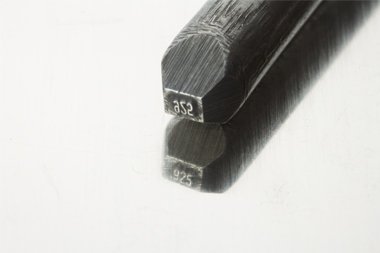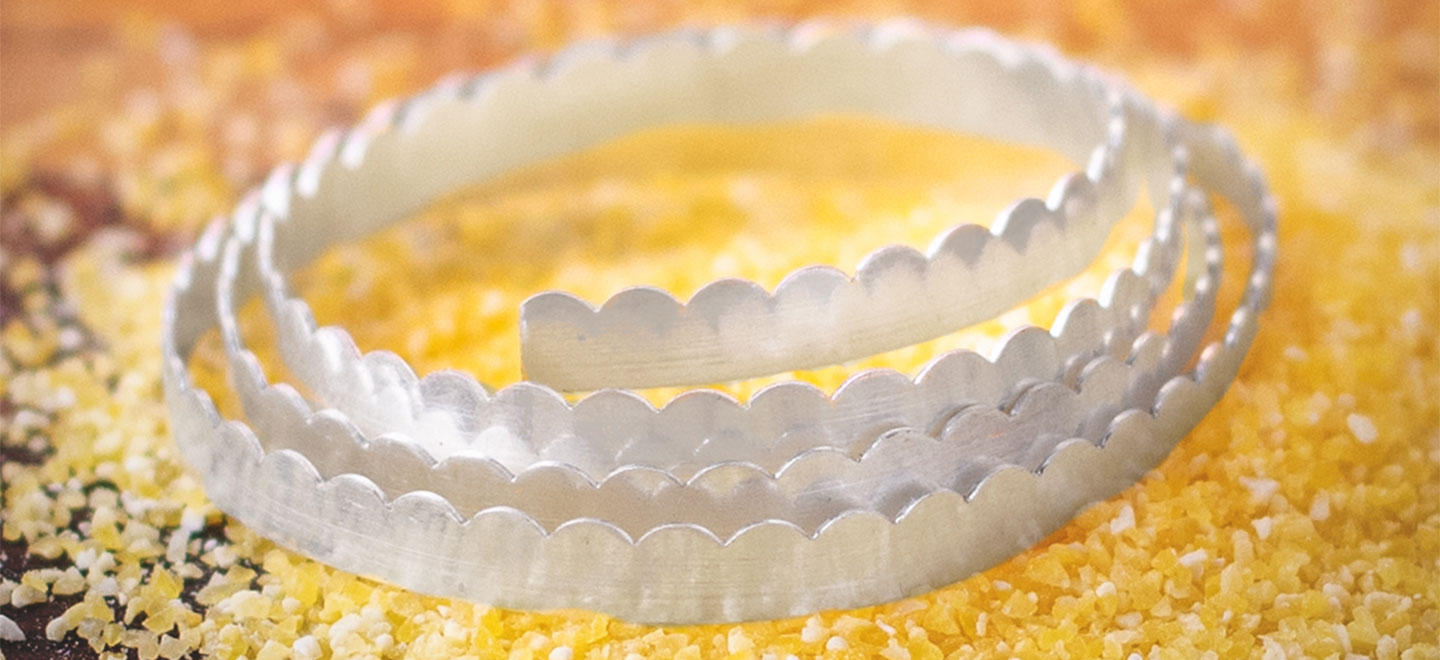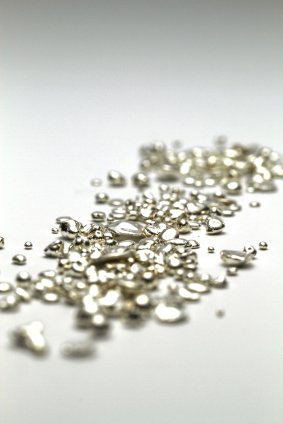Types of Silver – Learn the Grades of Silver Alloys & Purity in Jewelry
Learn about different types of silver alloys used in jewelry. What makes Argentium different from standard sterling silver? What is in Tibetan silver? Expand your knowledge so you can be an expert on all things silver!
There are many types of silver available on the market today. It is important to be familiar with the competing metals in the marketplace in order to educate your customers about silver quality standards and alternatives in the industry. Don’t assume you are buying sterling silver jewelry supplies when something is called “silver.” Below you will find definitions and comparisons of the different silver metals used to make jewelry around the world.
Mục lục
Silver Alloys
First, customers need to understand that silver used in jewelry is usually an alloy which means a metal mixture of two or more elements from the periodic table. Silver is an element. Other metallic elements are alloyed with silver for various reasons that are described below.
Quality Marks
Second, a lot of finished silver jewelry will have a quality stamp somewhere on the piece. This is the quickest way to identify quality. There are cases of fraudulent marking but they are fairly rare. These tiny markings may only be legible under magnification. However, jewelry items or components are only required to bear a stamp when there is a surface area available. For that reason, small findings and components are often unstamped even though they are quality alloys. Quality stamp standards are described in the sections below.
Metal stamp used to create a jewelry quality mark
Silver Grades
1. Sterling .925 Silver
Sterling is the jewelry quality standard in the United States and most world markets. It is an alloy of 92.5% silver. The remaining 7.5% is usually copper though it is sometimes other metals such as nickel. The other metals in the alloy increase hardness so the material will be more durable. Alloy additions also create the color and luster that is so prized by consumers. Sterling silver is the silver color we are most familiar with and the most common type of silver in US jewelry stores. It is very bright and shiny but it will tarnish. Tarnish is easy to clean with readily available polishing products.
Sterling silver is harder than fine silver but it is still soft compared to other metals. Fine sterling silver chain and thin metals can be stretched or “drawn” under tension. And jewelry will be scratched or dented if it is banged around. Sterling can be soldered, formed and annealed repeatedly. The most common quality stamps are .925 and Stg. SHOP STERLING SILVER CHAIN >>

Download our sterling silver care and info cards! They’re easily formatted to a 2×3 business card size..
2. Fine .999 Silver
Fine silver is the closest metal to the pure element silver. It is marked .999 which indicates 99.9% purity. The 0.1% remainder consists of trace elements of insignificant quantity. Fine silver has a more vitreous luster than the bright polish of sterling. It appears grayer and slightly dull. This type of silver is quite soft and will scratch, dent and change shape fairly easily. For that reason, it is less common in jewelry because items will not wear well over time. SHOP .999 FINE SILVER BEZEL WIRE >>
Bezel Wire is often made with fine silver so it can be shaped around cabochon stones easily.
However, there are benefits to fine silver. It is easy to form, it fuses without solder and it is highly resistant to tarnish. Fine silver is best for earrings or necklaces instead of rings or bracelets that are bumped and scratched more frequently because it is such a soft metal. Silver clay products reduce to fine silver and have increased the demand for pure silver jewelry in the US market. Hill Tribe silver is often .999 as well. The most common quality stamp on this metal is .999 FS or just .999.
3. Argentium Silver and Non-Tarnish Alloys
Non-tarnish alloys are fairly new to the market. Argentium is one brand but there are others available that are similar. These alloys are a minimum of 92.5% silver though some will be slightly higher in silver content. The remainder consists of copper and the addition of the element germanium. The germanium makes the alloy harder and resistant to tarnish. Non-tarnish alloys can still tarnish under extreme conditions and after extended periods of time. But, they will generally require less maintenance than sterling. This tarnish resistance is the chief benefit of the metal though it is also notable that Argentium will fuse without solder. The trade-off is price. Argentium is significantly more expensive than sterling and less readily available. It is difficult to distinguish from sterling once on the market because the quality stamp is still .925. Manufacturers can go through an application process to receive authorization to use the Argentium(r) mark as well but this stamp is large and impractical for many jewelry pieces.
4. Coin Silver
Coin silver was once a more common alloy in the United States. It is now fairly rare and the name causes quite a bit of confusion. The technical “coin silver” alloy is .900 silver, or 90% silver and 10% copper. The name “coin silver” is because metalsmiths historically made items from melted down scrap coin metal. At the time the name was given, coins were made from more precious metal than today. Monetary coins in our country, and most others, no longer contain silver and are instead made from more inexpensive, durable base metals. Some collectible coins or coin investment instruments have higher silver content. They are marked as such with a quality stamp and usually come with certificates of authenticity. Coin silver jewelry that is still on the market will bear a quality stamp of .900. Many of these pieces are antiques.
5. Silver
Jewelry sold as just “silver” is a bit of a mystery. The term is thrown around in the market as a color descriptor, especially in fashion. However, in the jewelry trade, items should be clearly identified as a specific standard quality. If not, it is unlikely that the silver alloy is of very high quality. Jewelry artists and manufacturers are legally required to either stamp pieces when space permits or tag finished products with quality designations.
Silver casting grain
6. Silver-filled
Silver-filled is a new layered metal that was introduced during the recent surge of silver prices during the recession. It is not an alloy because the metal content is not the same throughout the material. Instead, the sterling silver is all on the surface. Silver filled is either 5% or 10% sterling silver by weight fused with heat and pressure to a brass core. This metal is fairly new so it is not standardized in the US. Since silver-filled is a layered metal it cannot be cast. The silver layer is much thicker than silver plate but this is still a much lower quality product than solid sterling silver jewelry supplies and alloys. It will tarnish and it should only be soldered with precision equipment and special training. Now that the price of silver has come down from past highs the metal is less common in the market. There is no legally approved quality stamp standard for silver-filled at this time. However, some use the stamp .925 SF, which can be misleading.
7. Silver Plated
This is a base metal type of silver with an extremely thin plating layer of silver applied to the surface. Even when jewelry is described as fine silver-plated, the overall silver content is a tiny fraction of a percent. Silver-plated jewelry is affordable costume jewelry. Plating can tarnish and will eventually wear off to expose the base metal underneath. Costume jewelry will not have a quality stamp but it may bear the manufacturers logo or hallmark.
8. Nickel Silver
Nickel silver is a bit of a misnomer because “silver” describes the color of the metal and not the content. This is a base metal alloy consisting of primarily copper with nickel and/or zinc. This type of silver is an inexpensive base metal that is similar in appearance to sterling but, again, it contains no real silver at all. It is quite soft and makes an excellent practice metal. Nickel silver can be soldered but it is sometimes difficult to make solder seams that are not obvious. Nickel silver has many other names on the market such as Alpaca silver or German silver. It is used in costume jewelry but should be clearly described as a nickel alloy since many people are allergic to nickel. We also recommend selling nickel silver as a “base metal” because the term “nickel silver” can be misleading for consumers.
9. Tibetan or Tribal Silver
Tibetan silver and many other types of silver described as “tribal” silver etc are base metal alloys that are only silver in appearance. Contents of the alloys vary tremendously and many contain no silver content whatsoever. Some of these imports from exotic lands contain dangerous metals such as lead. Buyer beware. This jewelry should be purchased with caution and never ever given to children. Tribal pieces can be quite beautiful so purchase for the value of the design rather than the value of the metal.
10. Bali, Thai or Mexican Silver
There is a great deal of quality silver coming out of Bali, Thailand, and Mexico; however, that silver should also be marked and identified with a quality stamp and/or quality disclosure. There are also much lower grade silver alloys from these nations that are described with just the nation of origin. The name of the source country is no guarantee of quality or silver content on its own. Learn more about where your silver findings come from.
How do you test for silver quality?
There are two commonly used tests to determine the silver content in an alloy. X-ray testing is non-destructive but requires special, expensive equipment. Jewelry must be sent to a lab for x-ray testing. This test is fairly accurate on most silver items. However, it can be fooled by layered metals and some types of plating, so accuracy is less reliable. The best means of testing are wet chemical analysis or assay, which require a small amount of material to be permanently removed from the jewelry. These tests are extremely accurate when conducted in a reputable lab. We have a complete article dedicated to explaining jewelry lab tasting and the vigorous quality controls for sterling silver jewelry supplies at Halstead. Read about Halstead Lab Testing for Quality Control: A Jewelry Quality Assurance Program.
Neither of these lab tests is a viable option for consumers looking for a quick test at home. Instead, consumers are advised to buy silver from reputable sources that are honestly disclosing details on their materials. Quality stamps are also an excellent indicator when available.
Foster Trust with Customers
Keeping customers long-term means building trust in the quality of your jewelry pieces. Since sterling silver is easy to care for as well as easy to clean, it’s often a popular choice for consumers since they know they can trust the quality. Using sterling silver supplies from a reputable supplier is one of the easiest ways to ensure your jewelry is long-lasting quality. As sustainability and ethical concerns become increasingly important to consumers, you also want to know that your supplies are environmentally friendly. Check out how Halstead is working to increase transparency throughout the supply chain process for jewelry supplies.
Download Sterling Silver Care and Cleaning Info Cards
These cards are formatted to fit on 2×3 business cards! Create a double-sided insert or add them to the back of your business card so your customers will always know how to care for their jewelry.
Sterling Silver Info Card
Sterling Silver Care & Cleaning Card
Getting Started with Sterling Silver:
5 Steps to Start Silver Soldering
Types Of Silver Solder Used In Jewelry
Silver: Tarnishing, Cleaning, Polishing & Protecting
For a similar reference resource article about golden metals, check out our blog 9 Types of Gold Metal Used in Jewelry
New to jewelry making? Try out these project ideas:
Beginner Jewelry Making Projects
6 Steps to Make Cuff Bracelets
5 Tips for Making Hand Stamped Jewelry
Tips for Chain End Finishing
Texturing on Jewelry Metals
5 Ways to Elevate your Stamped Jewelry
Got questions? Email us at [email protected]. We’d love to hear from you. Sorry, studio support is not available by phone. Emails only, please.
About Halstead
Halstead is one of North America’s leading distributors of quality jewelry supplies.
Q&A
Q: Hi, a friend has brought me back beautiful silver pieces with enamel from Algeria. They are handmade and silver-gray in color. He told me that the silver in these pieces is more pure than the .925. Reading your article has me concerned about the possibility of lead since these pieces come from Kabayla, Algeria. Anyway to test and see? Thank you. – Jean
A: Hi Jean! Are the pieces stamped with any markings? There are lead tests that are available at hardware stores. You swab your jewelry with them and supposedly they will not damage your pieces (double-check ;on that since I’ve never used one before). You can also send them off to be tested, but that will cost more. I hope that helps!
Q: Does Karen Hill Tribe silver jewelry contain actual silver? Has lead? If not silver, what is it composed of? Thanks. – Jim
A: What a great question, Jim. I love Karen Hill Tribe silver! It does indeed have silver in it and is purer than sterling silver having a silver content of up to 99.9%. The solder content would bring that purity down slightly depending on how much solder was used and the type of solder. Silver solder is made up of silver, copper, and zinc with tin added to the easy solder. The percentages of each one vary depending on the type. However, solder can also have cadmium and lead in it, as well. I would suggest asking the vendor selling the Karen Hill Tribe silver if the pieces contain lead or cadmium. They should be able to tell you, or they can ask their source. I wrote an article Types of Silver Solder Used in Jewelry which covers silver solder alloys that you may find interesting. Thanks for the question!
Q: I have a figaro chain necklace that has 14k gold on one end and on the other end it has 385, it appears to be two-toned, what does that mean?
A: Can you check again? 585 is equal to 14kt. 585 would mean it is 58.5% gold and the rest is made up of alloyed metal. If it does say 385 that would not be a 14kt gold piece. Always clean it with gentle soap and a baby soft toothbrush. If that doesn’t work you could try a polishing cloth that can be used on gold. Hope that helps!










